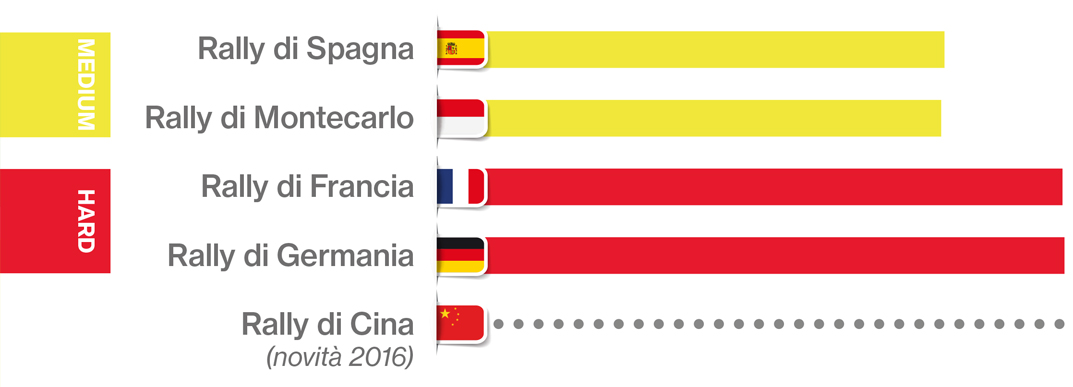Of the rallies on asphalt in the 2016 WRC, the hardest on the brakes is the Rallye Deutschland. The grip is fairly high, especially in the Arena Panzerplatte special stage where instead asphalt, the cars travel on strips of cement. Furthermore, there is a notable amount of 90 degree braking sections on this track that interrupt the long straightaways.
As a consequence, the braking torque in play is very high. The Rallye de France has also been judged very difficult for the brakes, but only for the 2015 and 2016 versions when the competition was held in Corsica. From 2010 to 2014, it took place in Alsace and ranked medium on the difficulty index.
In Corsica, on the other hand, the streets are very curvy and particularly narrow, which mandates the drivers to use the brake pedal continuously to correct the car. The Monte Carlo Rally is of medium difficulty for the braking system, but this claim comes from taking the average of the two sections at the opposite ends of the track. The initial special stages, near Gap, can offer excellent grip if there is no snow, and thus become very dangerous.
The final special stages, above Monaco, require the drivers to deal with ice and snow and so they almost never use the brakes. The Rallye de España is similar in that it starts out on asphalt and ends up on unpaved roads: the cars begin with equipment for asphalt, brakes included. When the surface changes, the mechanics replace the differentials, suspension and even the braking system.

